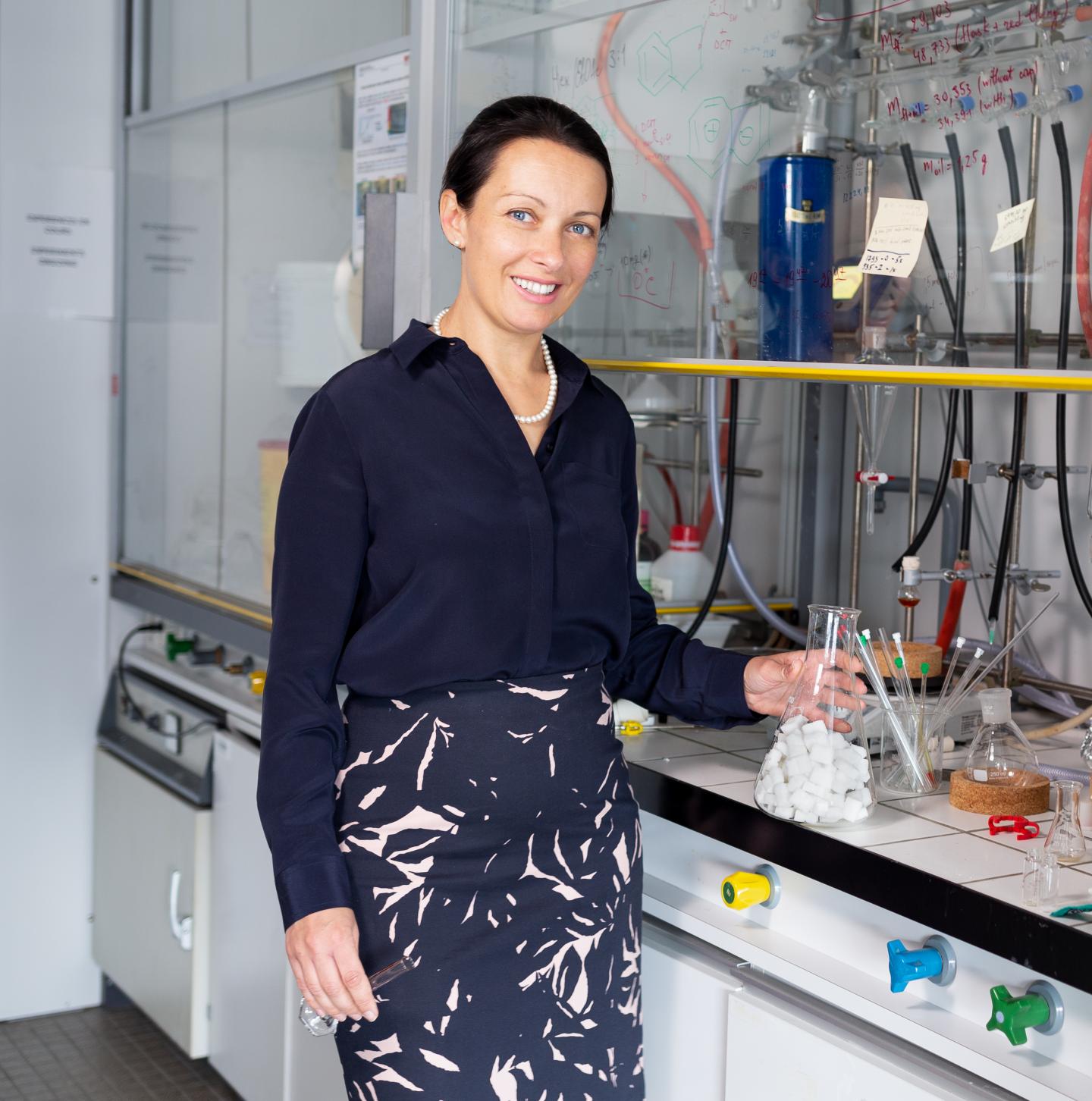
Credit: EPFL
EPFL scientists have invented a new way to quantify – in real-time – glucose metabolism of cancerous tumors by making them bioluminesce. This new light probe is not radioactive and works on living organisms such as mice that carry the tumor cells. The technique requires tagged tumor cells, two jabs and a camera. The results are published in Nature Methods.
Take a mouse with a tumor tagged with luciferase. Luciferase-expressing tumors are made by taking a sample of the cancerous tumor from a patient, and chemically labeling them with luciferase, a class of oxidative enzymes that produce bioluminescence. These labeled cells are grown in mice to understand the basic biology of the cancer and for the development of effective cancer treatments.
Next, inject a first compound in the mouse that doesn’t easily break down in the blood. Twenty-four hours later, inject a second compound that is designed to react only with the first under very specific conditions.
The reaction between the two compounds is engineered to produce bioluminescent light which escapes the body, like in fireflies, but happens where luciferase-expressing tumors have metabolized sugar. Point a CCD camera sensor at the body and you have a snapshot of the tumor’s metabolic levels. The amount of light produced is directly proportional to the amount of metabolized sugar.
“We wanted to develop a tool to help create more effective cancer treatments,” explains EPFL chemist Elena Goun of Laboratory of Bioorganic Chemistry and Molecular Imaging who led the study. “Our new imaging technique allows us to quantify how much sugar is being metabolized in real-time, providing valuable information about the metabolic status of the tumor and the types of drugs that could deprive the tumor of its major energy source.”
How it works: from fireflies to cancer imaging
Goun and her team found inspiration from the way fireflies glow and combined it with click-chemistry, a branch of chemical biology in which biocompatible molecules are designed to specifically “click” together in a tailored reaction that happens directly in the complex environment of the living organism.
Since cancer has a high metabolic rate, it consumes sugar in large amounts. This process is important for cancer growth and metastasis but remains poorly understood due to the lack of non-invasive tools that work at the level of the entire organism.
Goun’s idea was to engineer two click-molecules, one with sugar and the other with the “caged” luciferin, the light-emitting compound found in fireflies that make them glow. And it works.
Once the click-labeled sugar is eaten by the tumor, it reacts with this “caged” luciferin via the “click” reaction and produces bioluminescent light proportional to the amount of sugar entering the cells. She termed her firefly imaging technique BiGluc, short for “Bioluminescent glucose”.
BiGluc could be used to understand the metabolic requirements of different tumors, opening avenues for the generation of novel, effective treatments.
BiGluc in preclinical imaging of cancer metabolism and drug development
“Our novel optical imaging technique has high clinical applicability and many advantages,” says Goun. “It is non-radioactive, highly sensitive and quantifiable, the reagents are stable for years, and the glow can be observed for many hours.”
Due to its versatile nature, BiGluc could also be extended beyond cancer to image dysfunctional cells of many other important human pathologies in which changes in metabolism play a key role, such as diabetes, neurodegenerative diseases, nonalcoholic steatohepatitis, and many others.
“What’s exciting about these results is that we have created the foundation for the development of an ultra-sensitive imaging platform for quantifying the uptake of many important metabolites that play a central role in multiple human diseases with the goal of creating more effective treatments,” says Goun.
###
Media Contact
Hillary Santuary
[email protected]
Original Source
https:/
Related Journal Article
http://dx.




